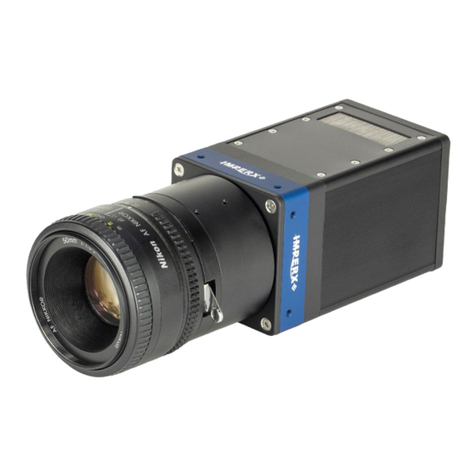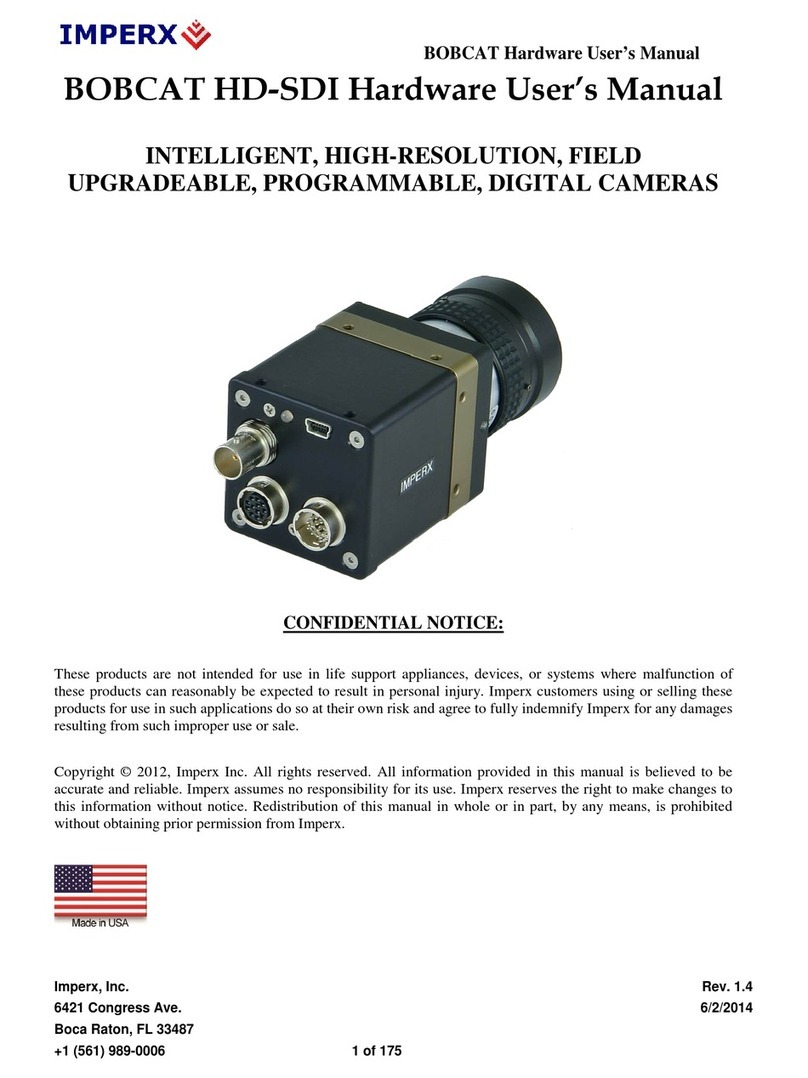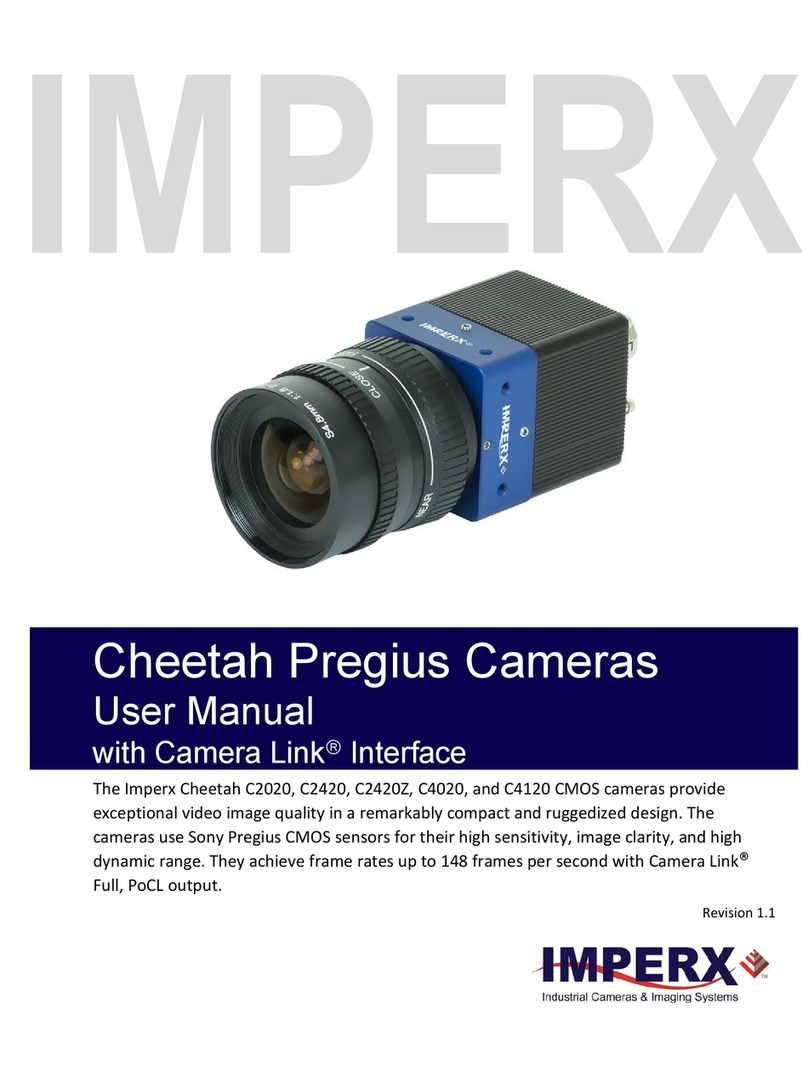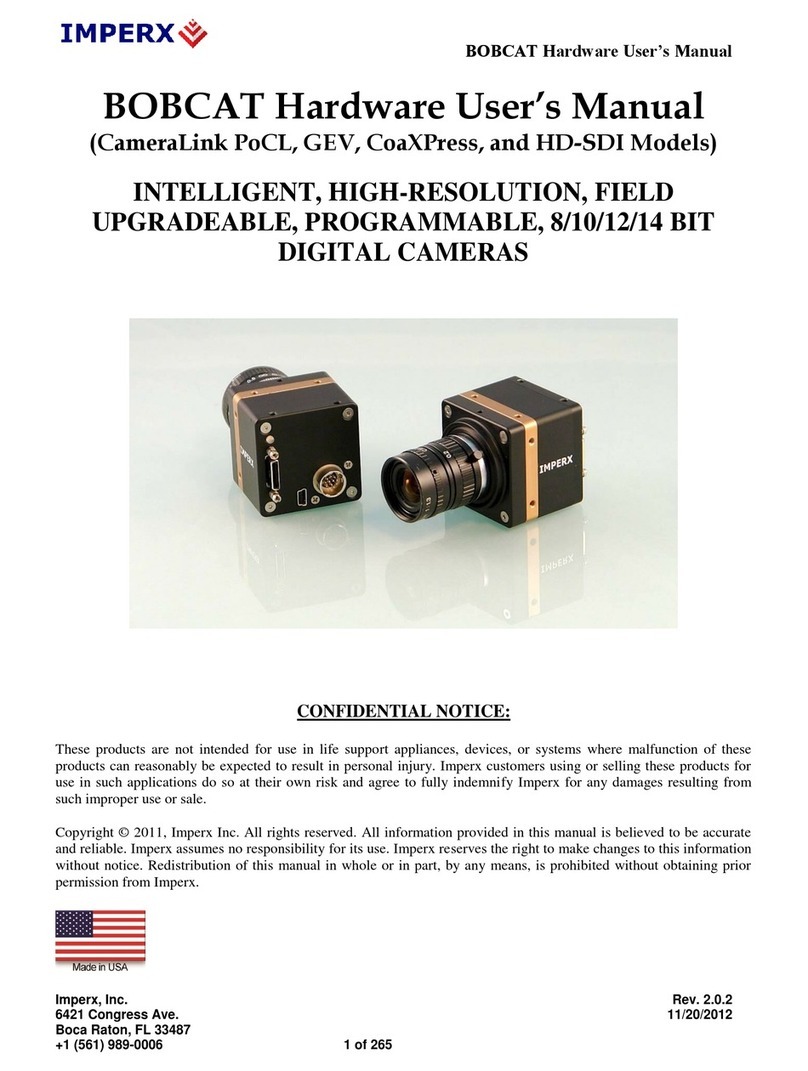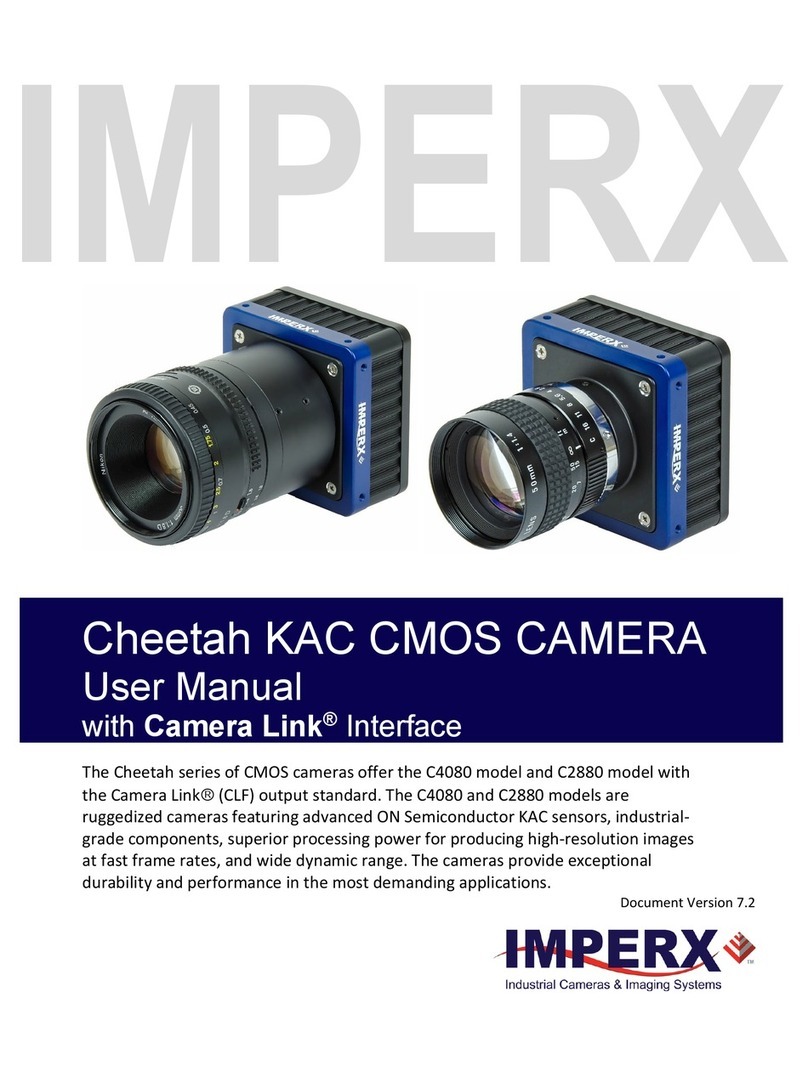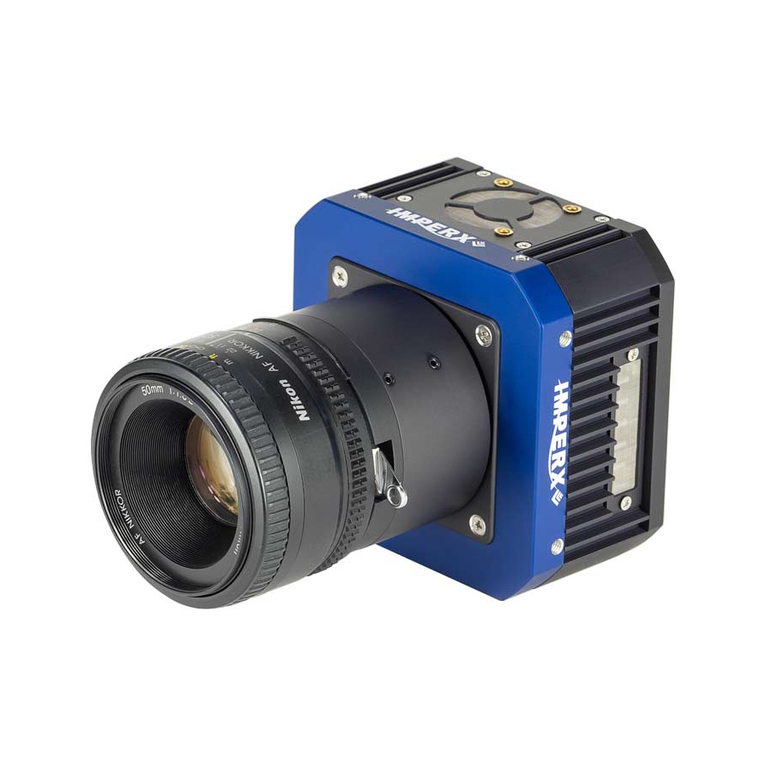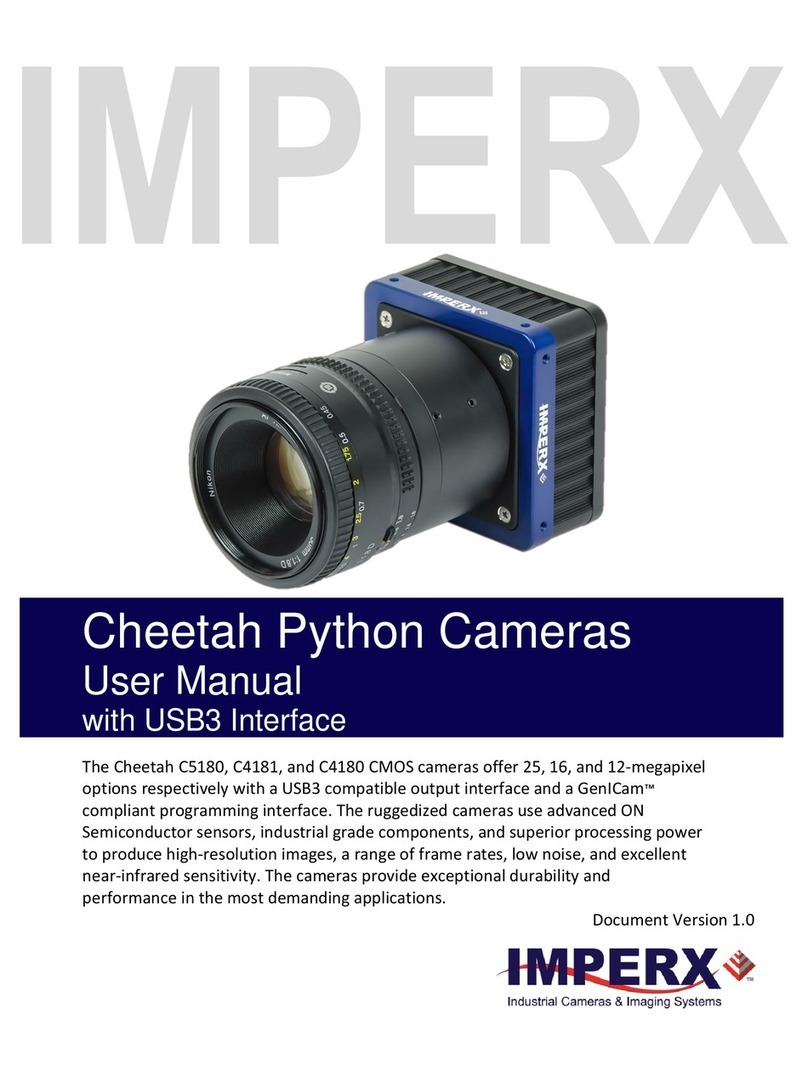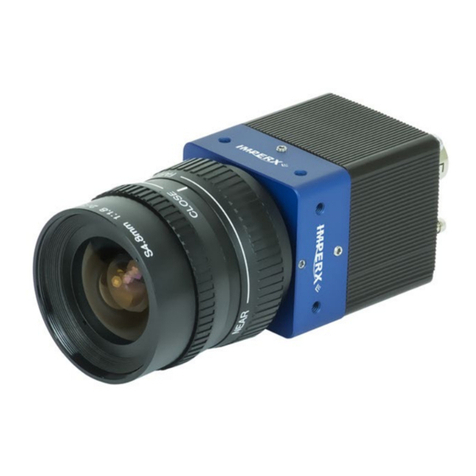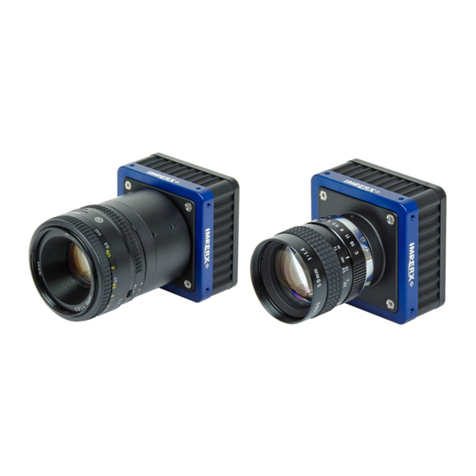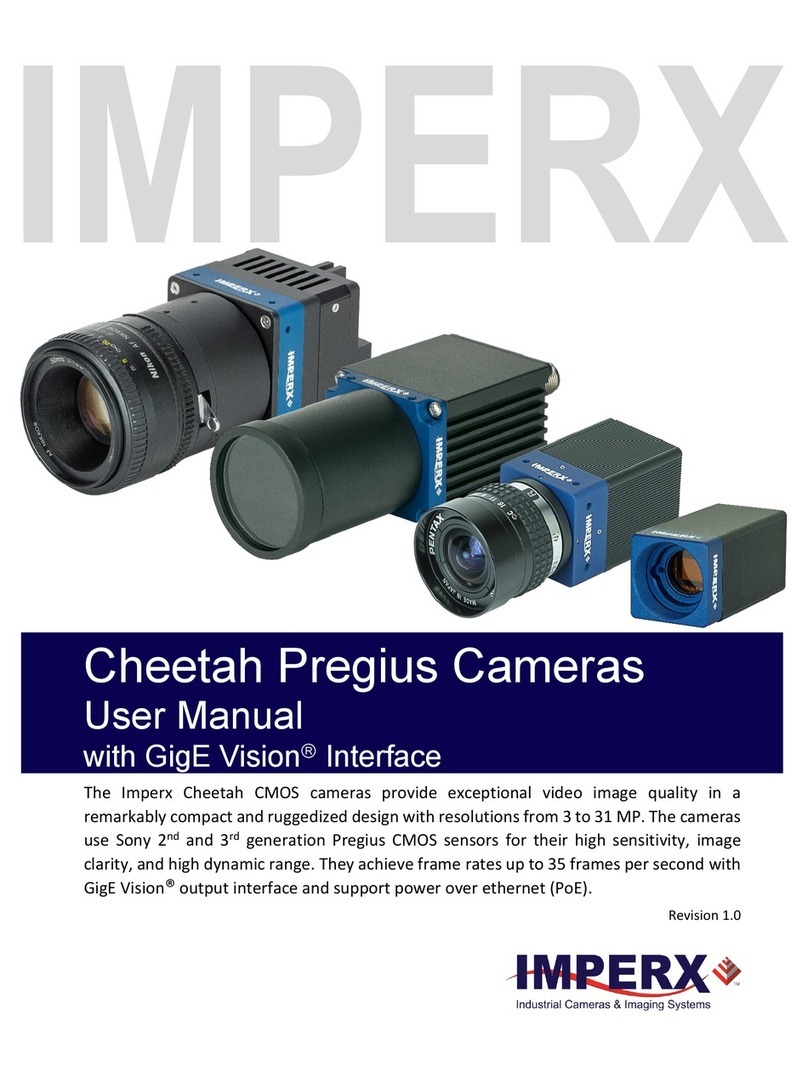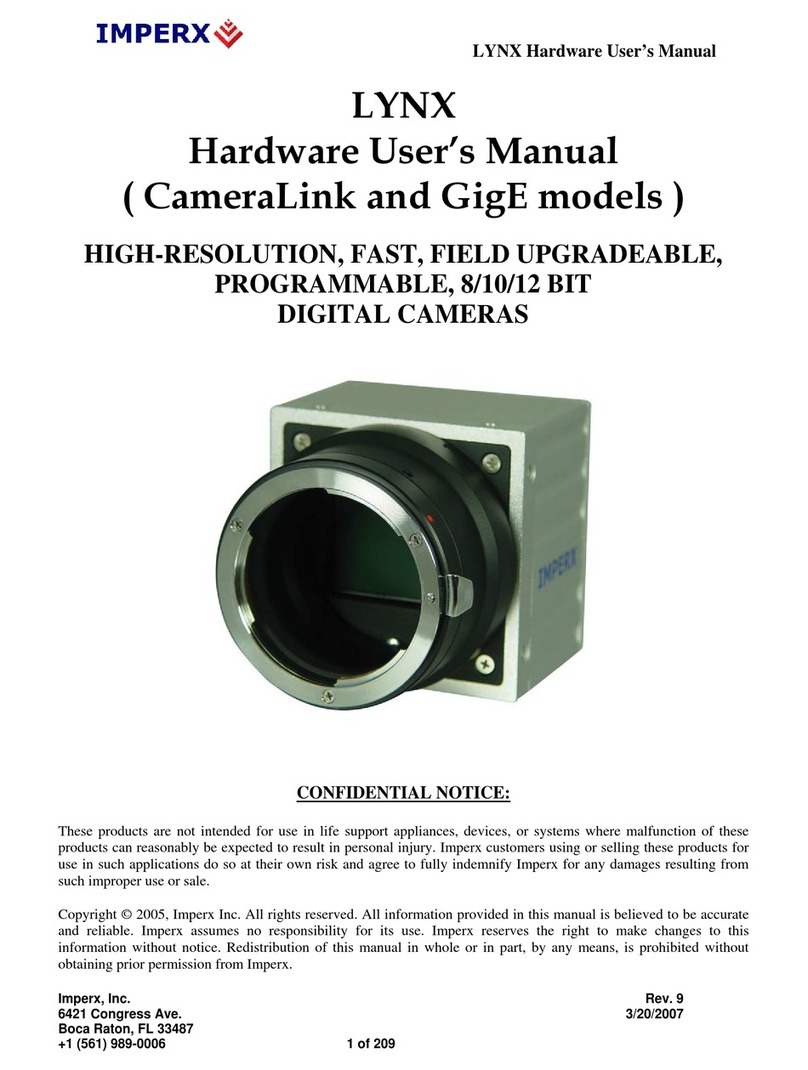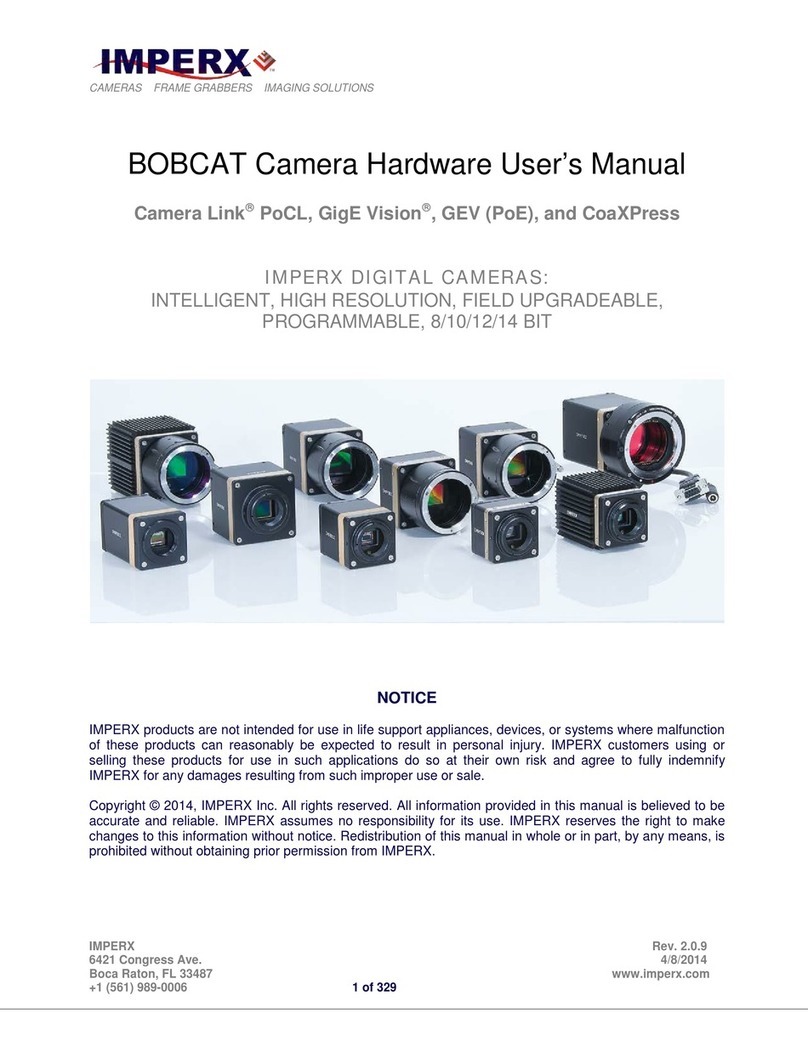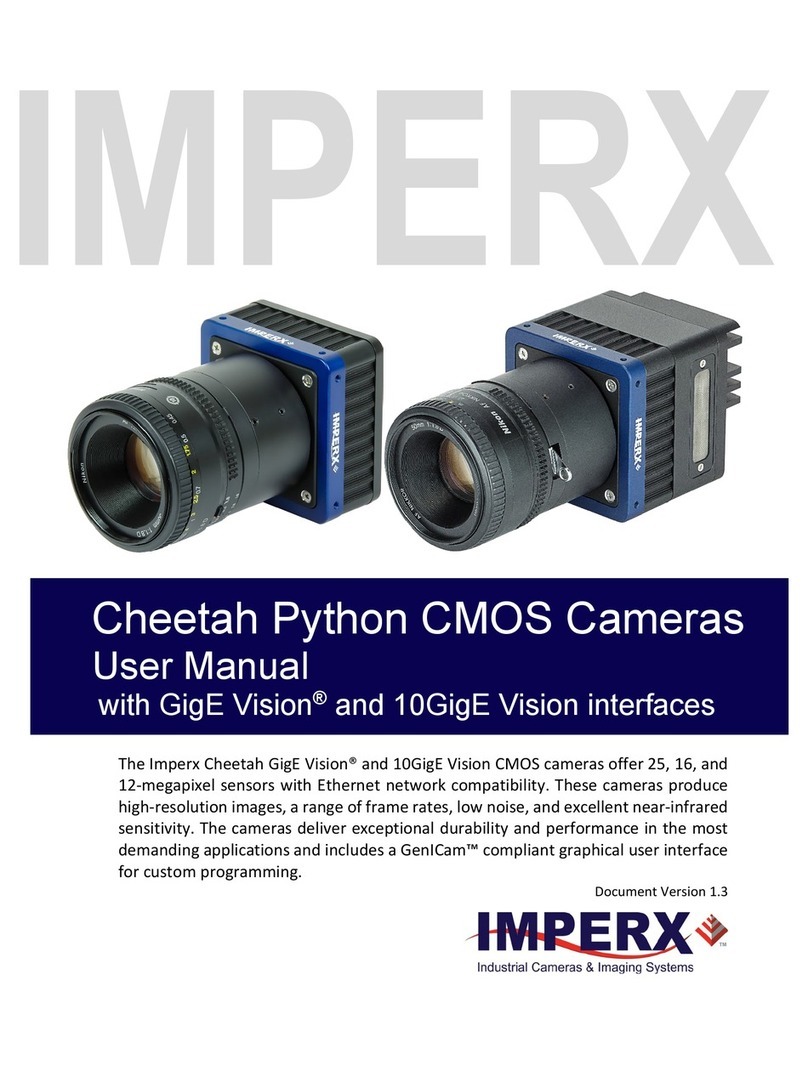Cheetah Python Camera with Camera Link –User Manual
March 23, 2018 Page 5 of 96 Rev 2.1
3.3.16 Triggering Workspace Registers....................................................................44
3.3.17 Strobe Control Registers ...............................................................................46
3.3.18 Pulse Generator Registers.............................................................................47
3.3.19 Test Pattern Workspace Registers ................................................................48
3.3.20 Input/output Workspace Registers...............................................................49
3.3.21 Data Output Bit Depth/Format Selector.......................................................49
3.3.22 White Balance (WB) Workspace Registers ...................................................50
3.3.23 Data Correction Workspace Registers ..........................................................51
3.3.24 Flat Field Correction and FPN Correction......................................................52
4 Software Configuration GUI ...............................................................54
4.1 Camera Configurator Overview ...............................................................................54
4.2 Installing the GUI .....................................................................................................54
4.3 Camera Discovery Procedure ..................................................................................55
4.4 Graphical User Interface..........................................................................................56
4.5 Main GUI Menu .......................................................................................................57
4.6 View GUI Windows ..................................................................................................60
4.7 Menu Help ...............................................................................................................61
4.8 Parameter Windows................................................................................................62
4.8.1 Acquisition Control Panel................................................................................62
4.8.2 Trigger Panel ...................................................................................................65
4.8.3 Pulse Generator Panel ....................................................................................66
4.8.4 Strobe Control and Output Mapping ..............................................................67
4.8.5 AGC / AEC Control...........................................................................................68
4.8.6 Data Output ....................................................................................................68
4.8.7 Color................................................................................................................70
5 Camera Features................................................................................72
5.1 Exposure Control .....................................................................................................72
5.1.1 Internal Exposure Control - Electronic Shutter ...............................................72
5.1.2 External Exposure Control ..............................................................................72
5.2 Frame Time Control .................................................................................................73
5.2.1 Internal Line and Frame Time Control ............................................................73
5.2.1.1 Zero-Row Overhead (ROT) Control ..............................................................73
5.2.2 Camera Output Control...................................................................................73
5.3 Area of Interest........................................................................................................74
5.3.1 Horizontal and Vertical Window .....................................................................75
5.3.2 Factors Impacting Frame Rate ........................................................................75
5.4 Subsampling.............................................................................................................76
5.4.1 Pixel Averaging................................................................................................76
5.4.2 Sub-sampling Decimation ...............................................................................77
5.5 Camera Triggering....................................................................................................78
5.5.1 Triggering Inputs .............................................................................................78
5.5.2 Acquisition and Exposure Control...................................................................78
5.5.3 Triggering modes ............................................................................................79
5.6 Strobes.....................................................................................................................80
5.7 Video Amplifier Gain and Offset..............................................................................80
5.7.1 Analog Gain.....................................................................................................80
5.7.2 Digital Gain......................................................................................................80
5.7.3 Digital Offset ...................................................................................................80
5.7.4 Black Level Auto-calibration and Black Level Offset .......................................81
